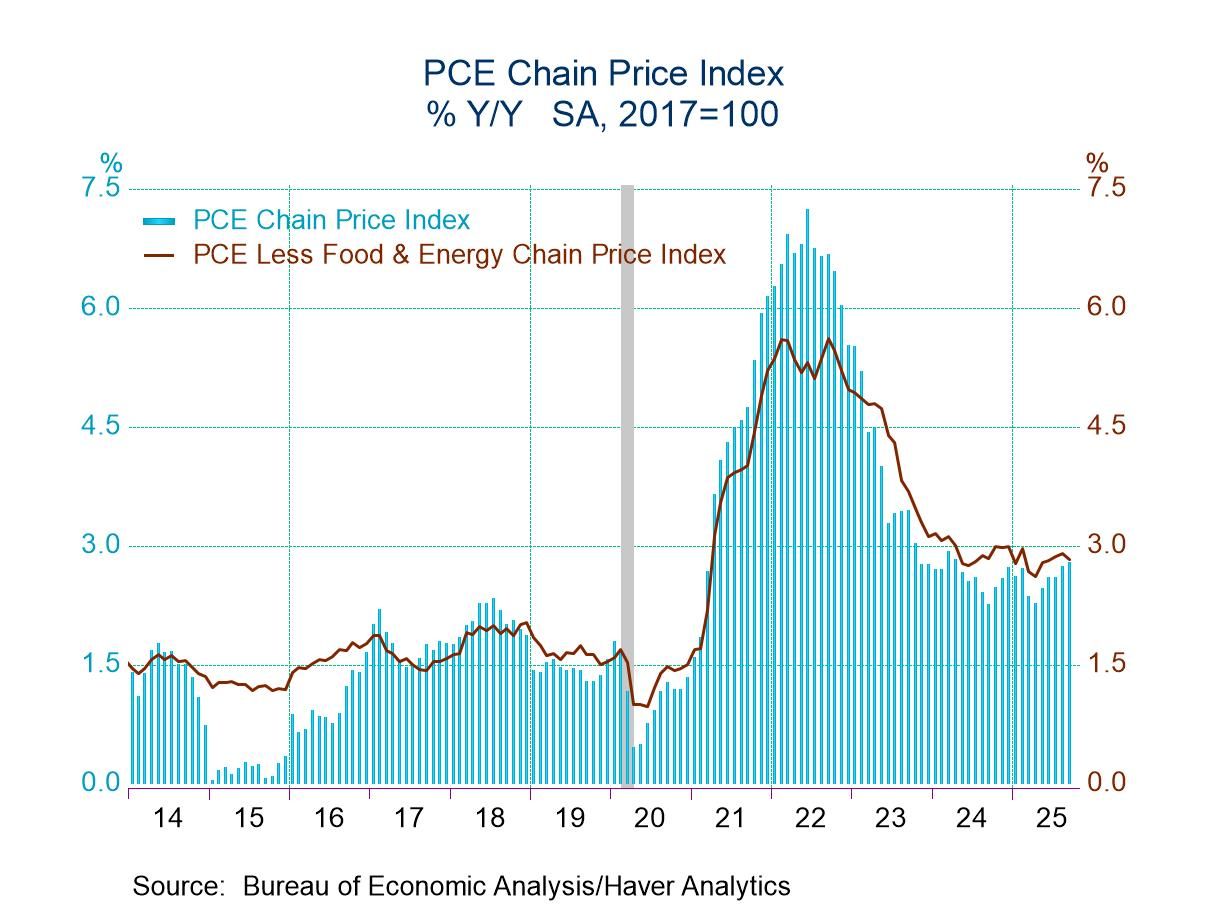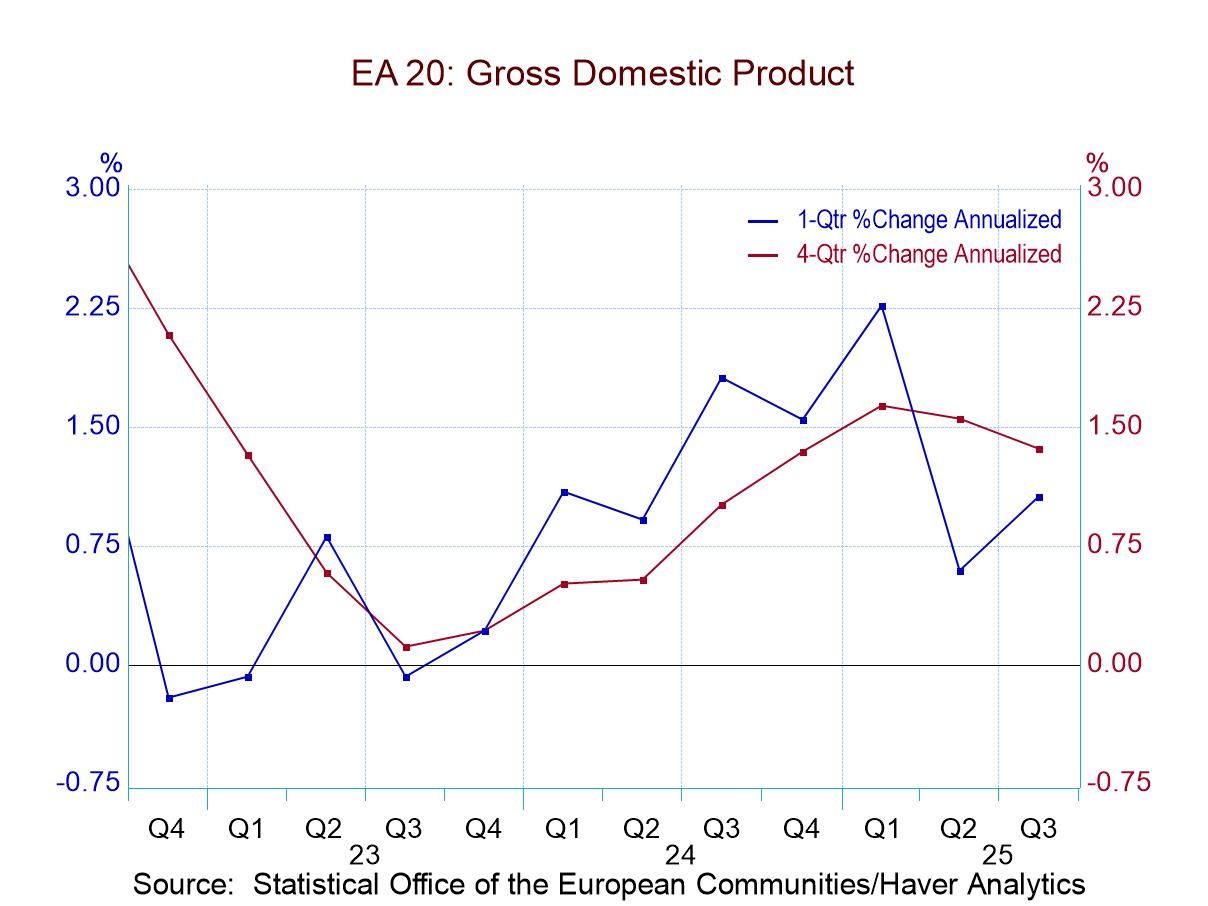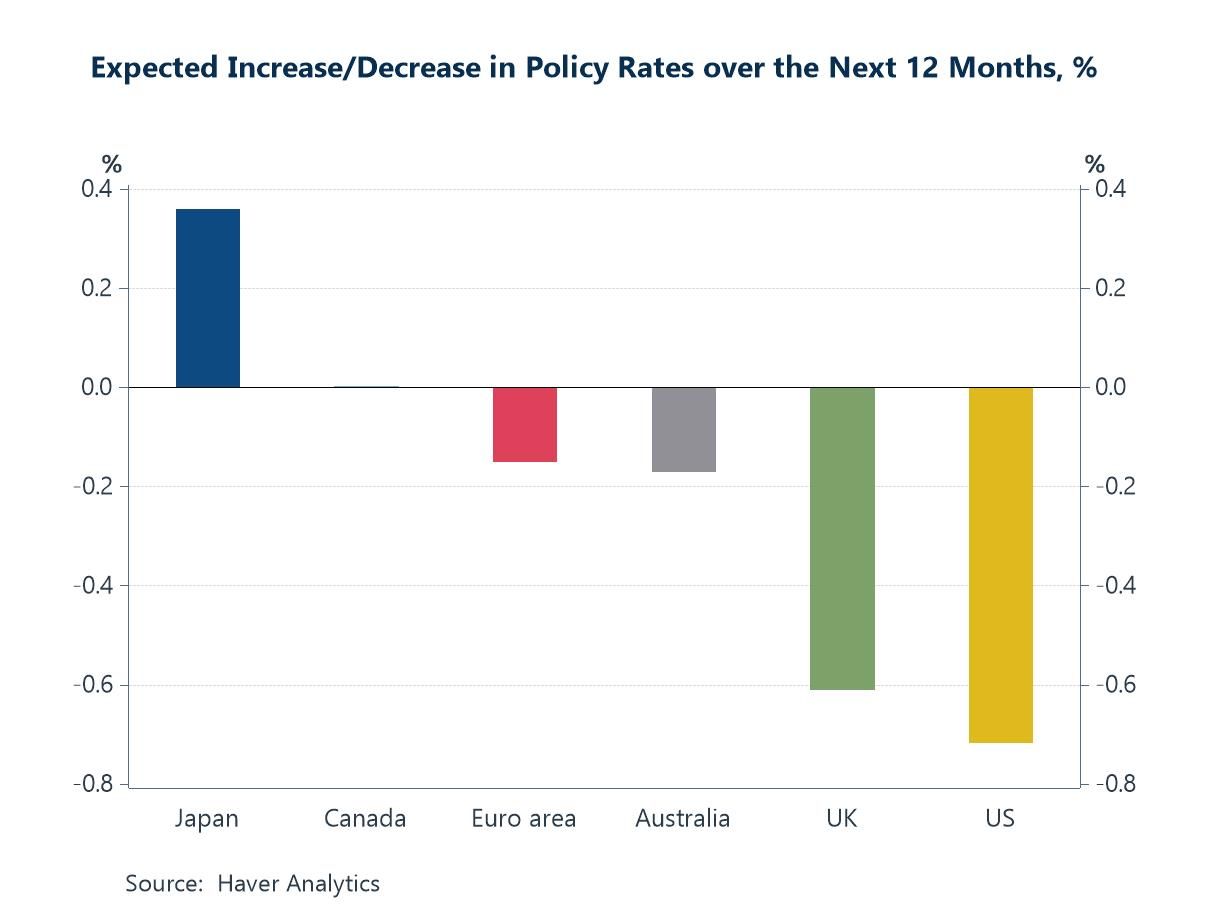 Global| Jun 05 2025
Global| Jun 05 2025Composite PMIs Show Some Life- But Still Near Death

The global PMIs for May continue to show a good deal of stability but at relatively weak levels of performance.
There is, in the May report, some difficulty in assessing performance in what always will be a large sample of countries. Here we're looking at 25 countries and each country reports initially 3 values, one for manufacturing, one for services and then a composite reading (a few do only report a composite). In this table, we're looking only at the combined composite reading which as a weighted reading emphasizes the service sector more than the manufacturing sector. Service sectors have come under pressure and at the same time there's been a lot more concern about manufacturing because of tariff policy and because of international sanctions that have been placed on pariah countries particularly Russia for its attack and its ongoing war against Ukraine. There is concern about manufacturing output and trade which is a factor more for goods than for services.
However, it now appears that this long grinding pressure against the goods sector has spilled over into the service sector and that service sectors are behaving much more erratically and performing at lower levels of activity. However, there's a complicated relationship involving goods sectors because U.S. tariff policy that has threatened global trade patterns and possibly the volume of global trade itself. This has also created a situation that has generated leads and lags that may have stimulated manufacturing sectors over the last few months as manufacturers have tried to pump out goods and shove them into countries ahead of expected there are barriers. Tariffs may have provided stimulus.
The initial draconian tariff barriers indicated by the U.S. were largely put into an abeyance, however the U.S. has a more modest 10% tariff in place and more recently a much larger set of tariffs has been imposed on steel and aluminum. I don’t know what ash changed to make U.S. steel a darling of U.S. industry because when I first studied economics back in the 1960s U.S. steel was then a laughingstock of excesses and competitiveness. It may now be the George Floyd poster-boy of U.S. industry.
The United States and China had a certain tariff detente that seemed to be in place; however, it now appears to be challenged. China has been denying access to rare earth exports not just to the U.S. but to European firms as well. This has generated a backlash from the U.S. and a claim that China has not been fairly administering the detente that had been agreed to. In response, China claims that the U.S. was not adhering to policies and among other things pointed to the recent U.S. policy of canceling Chinese student visas to study in the United States. However, in the last day or so, there has been a telephone call between President Trump and Prime Minister Xi and we'll have to see if that leads to any change in these circumstances. Most recently, Donald Trump, who considers himself a skilled negotiator, has said that Xi is a very difficult person to negotiate with. Trump also has run into difficulties with his negotiations with Vladimir Putin who seems to continue to shine on Mr. Trump and then to do none of the things that he promised Trump he would do. So, reality bites.
The comprehensive PMI data show the unweighted average that is just slightly weaker in May than in April; the median is also slightly weaker in May than in April; however, the G7 GDP-weighted reading is higher in May at 51.5 compared to 49.9 in April and the G6 weighting which excludes the U.S. finds an improvement to 49.2 in May compared to 48.9 in April. On a GDP-weighted basis, there does appear to be some progress that might be occurring, but overall based on the unweighted averages and looking at various groupings of countries there still seem to be severe challenges based on the assessments of the PMI.
In addition, the rankings that are presented show that very few of these 25 reporting countries have current readings that are above their medians of the last 4 1/2 years. Only 6 of 25 countries show current ratings that are above their historic medians; among those, Italy is the only large-economy country that's above its median.
The chart plotted for this presentation shows a great deal of confusion in terms of where these various aggregated sector trends are going. The services and the composite indexes are still clearly trending lower, setting aside their particular movements in the last couple of months. Manufacturing that has weaker readings overall, show some life, but some of this may be generated by the leads-and-lags of the tariff process.
Manufacturing may be turning higher on the need for Europe to provide more of its own defense. This requirement should stimulate the manufacturing sector in Europe in the months and years ahead as the U.S. is going to be relying on Europe to provide more of its own security. However, over the long run, spending more money on military goods doesn't seem to be a good way to improve global welfare. We have benefited in recent years from a long period of political stability and demilitarization, but now it looks like that peace dividend is gone and at least there will be some increase in output from the goods sector as a result. But it's hard to paint that overall as a good development.

Robert Brusca
AuthorMore in Author Profile »Robert A. Brusca is Chief Economist of Fact and Opinion Economics, a consulting firm he founded in Manhattan. He has been an economist on Wall Street for over 25 years. He has visited central banking and large institutional clients in over 30 countries in his career as an economist. Mr. Brusca was a Divisional Research Chief at the Federal Reserve Bank of NY (Chief of the International Financial markets Division), a Fed Watcher at Irving Trust and Chief Economist at Nikko Securities International. He is widely quoted and appears in various media. Mr. Brusca holds an MA and Ph.D. in economics from Michigan State University and a BA in Economics from the University of Michigan. His research pursues his strong interests in non aligned policy economics as well as international economics. FAO Economics’ research targets investors to assist them in making better investment decisions in stocks, bonds and in a variety of international assets. The company does not manage money and has no conflicts in giving economic advice.






